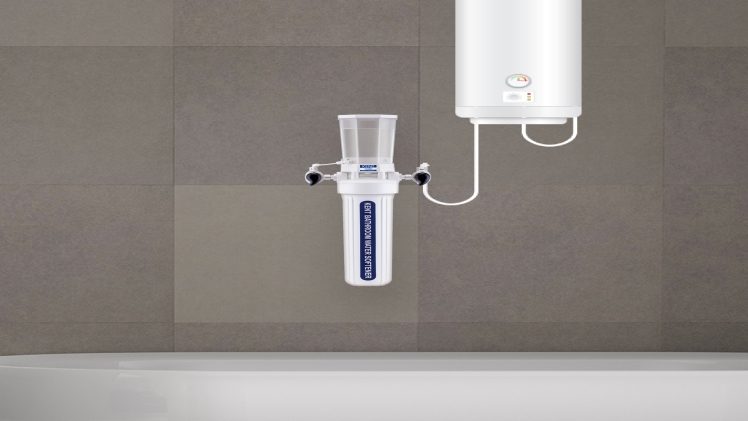The bathroom is one such place in your house where water is used in abundance. From using water to brush your teeth, to do your laundry, and from taking a shower to using the toilet; water is used for pretty much everything that you do inside the bathroom. You should choose it wisely as per the water quality of your area and number of people in your house. If you are four family membrs, you should get a water softener for a family of four.
Water Softener Helps your Bathroom in Several Ways
Water Softener Prevents Plumbing Issues
With a water softener for overhead tanks installed, you can have enjoyed good water pressure. One of the primary concerns associated with hard water is that it can mess up your plumbing system. The minerals responsible for causing hard water like magnesium and calcium start building up inside the pipes, which in turn narrows their internal diameter, hence resulting in lower water pressure by limiting the quantity of water flowing inside your bathroom pipes. This can become a problem when you are taking a shower or working at the sink.
A water softener will eliminate all the hardness from the water, therefore facilitating the easy and rapid flow of water and enabling better water pressure from your showerheads and faucets.
Water Softeners Optimizes the Performance of Your Water Heater
What we overlook about the hard water is how it wreaks havoc on your water heater and its performance. The hard minerals start building up at the base of the water heater’s tank, which creates a layer between the water present in the tank and the heating elements of the heater. All of this makes it impossible for the water to heat up and this implies that you will receive cooler water when you are taking a bath.
A water softener for bathroom water can prevent all of these problems and help your water heater to work as it should be or according to the set temperature by the user.
Water Softeners Prevents Clogging of Drains
As you have already learned, the hardness minerals build up in the pipes over the years. Not only does this accumulation of the minerals minimize the water pressure but can also narrow the passage of your pipes and clog your drains completely. The water softener will reduce the clogs that you deal with, by getting rid of the hardness minerals.
Water Softener Eliminates the Limescale
You might be acquainted with the limescale already. Limescale is a white crusty substance and tends to build upon the bathroom faucets, on the surfaces, and the showerheads. The limescale isn’t soothing to the eyes and is a result of hard water. By installing a water softener for bathroom water, you can stop the building of water softener and maintain the cleanliness of your bathroom.
Water Softeners Keeps Your Skin and Hair Healthy and Clean
After taking showers, your skin and hair will both stay healthy and clean, once you install a water softener. The hard water makes it impossible to produce lather through soaps and shampoos, which in turn brings down their effectiveness. The skin and hair will become dry and you wouldn’t feel clean as you should be after every shower, with hard water. But by softening the hard water with a water softener for overhead tanks, you can make the most of all the products.
Understanding How Water Softener for Bathroom Water Works
A water softener is a filtering product that is designed to remove the presence of calcium and magnesium from the water. What most people are oblivious to is that not every water is the same, especially when it comes to chemical composition. The amount of magnesium in some water is quite high which it absorbs from the earth along with calcium minerals, both of which make the water hard. The water will be determined as soft, in case the water lacks both of these minerals, or have them in restricted amounts.
A water softener for bathroom water is trusted to turn the hard water soft. The water softener removes the mineral components which are held responsible for making the water hard. Water softening is the procedure of eliminating calcium and magnesium along with other metal cations from the water.
What Does a Water Softener Include?
The water softener comprises an elongated and narrow water-softener tank. A short and wide brine tank is also included in a water softener. The water softener tank is attached to the water supply source of the house. The thing that connects the water softener tank with the brine tank is a small-diameter fill tube. The softener tank has a discharge hose running from itself to the drywall and drainpipe. The softener tank features specially formulated resin beads that are sealed permanently in the tank. You can fill the brine tank with potassium chloride pellets and salt pellets through the removal lid.
If hard water is stripping your hair and skin of its moisture and shine, then time to fight it out with a water softener for overhead tanks. The water softeners are built for multistorey buildings and run inclusive of two regeneration processes which makes them easy to use.

